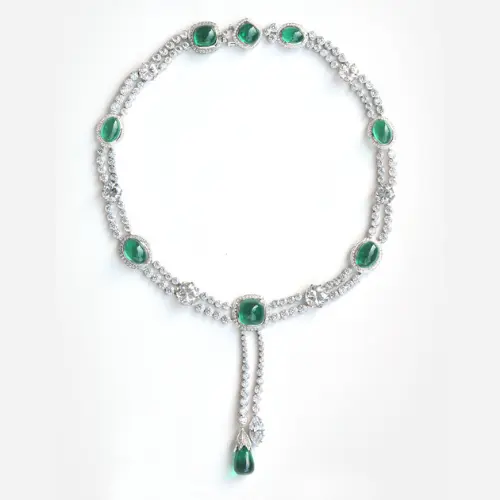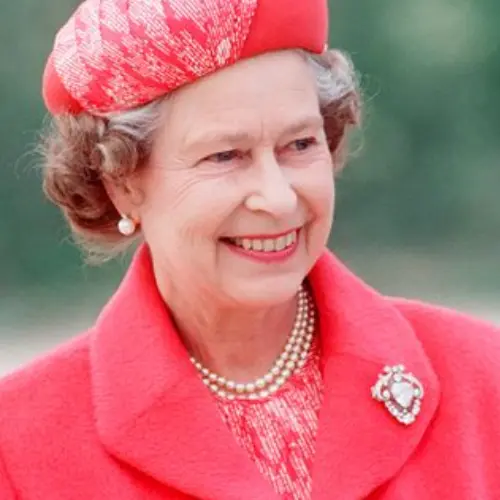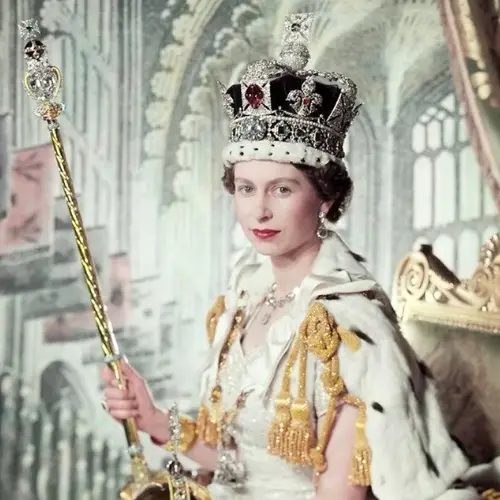
The Cullinan Diamond, a name that resonates with elegance, prestige, and a storied history, has captured the world's fascination since its discovery in 1905. This magnificent gemstone, one of the largest ever found, has been a symbol of opulence and has been meticulously crafted into exquisite jewelry pieces fit for royalty. In this blog, we will delve into the captivating tale of the Cullinan Diamond and explore the jewelry pieces that have been created from this extraordinary gem, highlighting the British royal family members who have had the privilege of wearing these priceless works of art.
The Discovery of the Cullinan Diamond

The story of the Cullinan Diamond begins in the Premier Mine in South Africa on January 26, 1905. It was here that a remarkable discovery was made by Frederick Wells, the unearthing of a colossal diamond that would later be named after Sir Thomas Cullinan, the mine's owner. Weighing an astonishing 3,106 carats, the Cullinan Diamond is the largest gem-quality diamond ever found. This remarkable discovery sent ripples of excitement throughout the world, and its sheer size and quality left the experts astounded.
The Cullinan Diamond, in its rough form, resembled an uncut crystal rather than the dazzling gem it would later become. It was acquired by the Transvaal Colony government, who decided to gift it to King Edward VII of the United Kingdom in an act of diplomacy. The decision to give the diamond to the British monarch was made in the hope of fostering good relations between the Transvaal Colony and the British Empire.
Cutting the Cullinan: A Triumph of Skill and Precision

Before the Cullinan Diamond could be transformed into the breathtaking jewelry pieces we know today, it had to be expertly cut. This monumental task was entrusted to a group of skilled craftsmen in Amsterdam. The responsibility for cutting the diamond was given to Joseph Asscher, a renowned diamond cutter who had built a reputation for handling exceptionally large diamonds.

The process of cutting the Cullinan Diamond was an intricate and painstaking one. To prevent any mishaps, Asscher designed a unique cleaving machine that would allow him to make a precise incision. The first attempt to split the diamond, however, ended in failure, as the cleaving blade broke. Remarkably, Asscher's second attempt was successful, and the Cullinan Diamond was divided into nine major gemstones, with 96 smaller stones also produced during the process.
The Cullinan Gems: A Royal Legacy
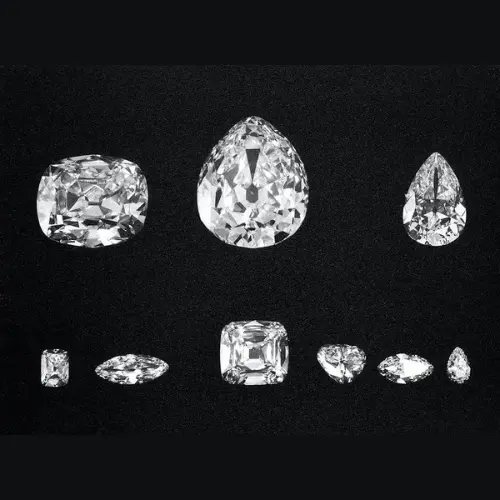
The nine major gemstones into which the Cullinan Diamond was cut have since been incorporated into several iconic jewelry pieces that are part of the British royal family's collection. Here are some of the most notable gems:
1. Cullinan I (The Great Star of Africa)
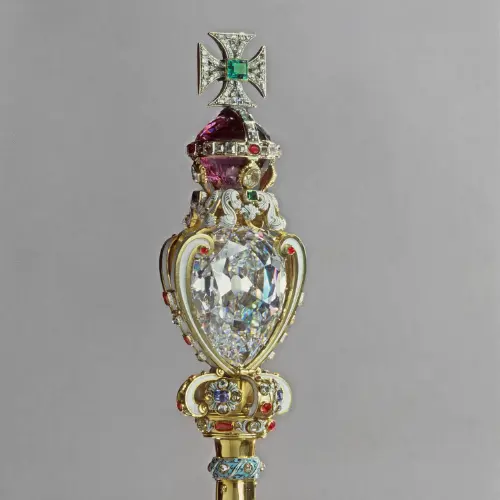
The largest of the nine gems, Cullinan I weighs an impressive 530.2 carats. This pear-shaped diamond is set as the principal stone in the Sovereign's Sceptre with Cross, one of the regalia used during the coronation of British monarchs. It is also removable and can be worn as a pendant. Cullinan I has graced the coronation ceremonies of numerous British monarchs, including Queen Mary, Queen Elizabeth The Queen Mother, and Queen Elizabeth II.
2. Cullinan II (The Second Star of Africa)
Weighing 317.4 carats, Cullinan II is the second-largest gem cut from the original diamond. It is set in the Imperial State Crown, which is worn by the reigning monarch during the State Opening of Parliament. Queen Elizabeth II has donned the Imperial State Crown numerous times during her reign, and each time, the radiance of Cullinan II adds to the regal splendour.
3. Cullinan III and IV

Cullinan III is a pear shaped diamond, weighing 94.4 carats, and Cullinan IV is a cushion cut diamond, weighing 63.6 carats, are often worn together as brooch. Queen Mary used to pair them together as a pendant or as a centrepiece to the Delhi Durbar Tiara. These gems have been worn by various members of the British royal family, including Queen Elizabeth II and Queen Elizabeth The Queen Mother. In 1911, Queen Mary wore this brooch, set with these diamonds.
4. Cullinan V
Weighing 18.8 carats, Cullinan V is a heart-shaped diamond and is set as the centre stone in a brooch. Initially envisioned by Queen Mary as a versatile accessory, the brooch graced her during the 1937 coronation of King George VI and his wife, Queen Elizabeth. In 1953, Queen Elizabeth II inherited this enchanting piece and, throughout her reign, she adorned numerous significant occasions with the Cullinan V Brooch.
Cullinan VI and Cullinan VII are marquise-shaped diamonds, weighing 11.5 and 8.8 carats, respectively. Cullinan VI diamond is paired with Cullinan VIII to make a brooch. This brooch mimics the design of the Cullinan V brooch. Cullinan VII is set as a suspending drop of the negligee-style emerald and diamond necklace from the Delhi Durbar Parure.
6. Cullinan VIII and IX
Cullinan VIII is a 6.8-carat cushion-cut diamond, which is set in the top piece of the Cullinan VI and VIII brooch. Queen Elizabeth II was spotted wearing this brooch in 2019 for a reception at Windsor Castle. The 4.39-carat pear-shaped Cullinan IX is the smallest of the nine diamonds extracted from the Cullinan diamond and IX is set in a prong-setting ring that was originally made for Queen Mary and is currently worn by Elizabeth II.
The British Royal Family's Affection for the Cullinan Diamonds
The Cullinan Diamonds have become cherished heirlooms within the British royal family. They are not only celebrated for their extraordinary size and quality but also for the rich history they carry. The stones have been passed down through generations and have adorned the royal family members on numerous significant occasions.
Queen Mary, the wife of King George V, was particularly fond of the Cullinan Diamonds and often wore them, including Cullinan III and IV. Her granddaughter, Queen Elizabeth II also cherished the Cullinan Diamonds and frequently wore the brooch featuring Cullinan III and IV.
Queen Elizabeth II has continued the tradition of wearing these remarkable gems. She has worn Cullinan II, set in the Imperial State Crown, on multiple occasions, including her coronation in 1953 and during the State Opening of Parliament. Cullinan V, the heart-shaped brooch, is another favourite of Queen Elizabeth II, often seen adorning her attire during public appearances.
The Cullinan Diamonds not only serve as exquisite pieces of jewelry but also as symbols of the enduring connection between the British royal family and the history of the British Empire.
The Cullinan Diamond is a treasure that transcends time, with a remarkable story that continues to captivate the world. From its astonishing discovery in the Premier Mine to the meticulous craftsmanship that transformed it into a collection of extraordinary gemstones, the Cullinan Diamond has left an indelible mark on history.
The jewelry pieces created from the Cullinan Diamond, such as Cullinan I and II, have not only been an integral part of the British royal regalia but also have been cherished by generations of British monarchs and their consorts. The enduring legacy of the Cullinan Diamonds showcases their remarkable beauty and the role they have played in the pageantry of British royal life.
As we look at these extraordinary gems, we are reminded of the enduring legacy and the deep historical connection between the British royal family and the Cullinan Diamond, a connection that continues to shine brightly in the present day.





